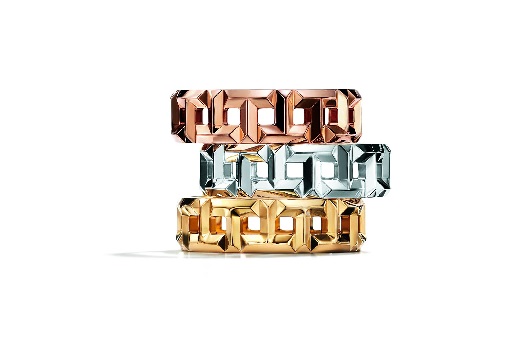Personalizing Can Give Stores an Edge
 RAPAPORT... In the retail industry, "The customer is always right" haslong been the motto. This drive to please consumers means businesses areconstantly in search of new and inventive ways to make them happy. But where dothey start? What does the general public look for when making a purchase? Andwhat is everyone talking about when they say the new-age consumer is lookingfor an "experience"?The retail experience means something different to eachbusiness, depending on its target market, says Elle Hill (pictured, right), CEO of fine-jewelrylaunch and growth experts Hill & Co. "Customers' buying-experience requirements and expectationsvary widely, from wanting a rapid navigation and checkout process online, toenjoying a luxurious in-store experience sipping champagne and trying onpieces," she notes. "The key is knowing who you are, who your ideal consumeris, and how you marry what you deliver to their expectation."
RAPAPORT... In the retail industry, "The customer is always right" haslong been the motto. This drive to please consumers means businesses areconstantly in search of new and inventive ways to make them happy. But where dothey start? What does the general public look for when making a purchase? Andwhat is everyone talking about when they say the new-age consumer is lookingfor an "experience"?The retail experience means something different to eachbusiness, depending on its target market, says Elle Hill (pictured, right), CEO of fine-jewelrylaunch and growth experts Hill & Co. "Customers' buying-experience requirements and expectationsvary widely, from wanting a rapid navigation and checkout process online, toenjoying a luxurious in-store experience sipping champagne and trying onpieces," she notes. "The key is knowing who you are, who your ideal consumeris, and how you marry what you deliver to their expectation."  Chain reactions Many jewelry retailers have made the effort to rework theirconsumer offerings, whether by creating an in-store experience to setthemselves apart, or giving the client a say in the creation of her jewelry. Macy's will spend over $200 million on renovating 50 of itslocations to offer customers a more personalized and well-rounded experience.The department store has even placed a Starbucks inside its branches toaccommodate shoppers. In an effort to cater to all target markets, Macy's hasalso added lab-grown diamonds to its jewelry division. Meanwhile, Saks Fifth Avenue began a $250 million redesignon its flagship store in May, to transform it from a traditional departmentstore into an experience-driven location. "The Vault" is a full-floor,luxuriously appointed space completely dedicated to high-end jewelry, providingcustomers with hands-on, custom consultations and a rotation of limited-editiondesigns. The exclusive section gives consumers "a more private, secure locationfor making very expensive purchases," Saks says. A year ago, luxury-jeweler Tiffany & Co. hired CEOAlessandro Bogliolo to steer it toward innovation and an experiential approach.Bogliolo believes "meaningful innovation" strengthens the connection betweencustomer and brand. Under his management, Tiffany has reinvigorated its image,launching ad campaigns targeting different generations of consumers andfeaturing popular young stars.
Chain reactions Many jewelry retailers have made the effort to rework theirconsumer offerings, whether by creating an in-store experience to setthemselves apart, or giving the client a say in the creation of her jewelry. Macy's will spend over $200 million on renovating 50 of itslocations to offer customers a more personalized and well-rounded experience.The department store has even placed a Starbucks inside its branches toaccommodate shoppers. In an effort to cater to all target markets, Macy's hasalso added lab-grown diamonds to its jewelry division. Meanwhile, Saks Fifth Avenue began a $250 million redesignon its flagship store in May, to transform it from a traditional departmentstore into an experience-driven location. "The Vault" is a full-floor,luxuriously appointed space completely dedicated to high-end jewelry, providingcustomers with hands-on, custom consultations and a rotation of limited-editiondesigns. The exclusive section gives consumers "a more private, secure locationfor making very expensive purchases," Saks says. A year ago, luxury-jeweler Tiffany & Co. hired CEOAlessandro Bogliolo to steer it toward innovation and an experiential approach.Bogliolo believes "meaningful innovation" strengthens the connection betweencustomer and brand. Under his management, Tiffany has reinvigorated its image,launching ad campaigns targeting different generations of consumers andfeaturing popular young stars.  The jeweler has also created a completely new engagementring collection, Tiffany True (pictured, right), which enables customers to choose from varioussettings and stones. The line will be available at Tiffany stores, includingits famous New York flagship, which is in the process of an innovative redesignthat will "create a dramatic new experience for customers," the company says. Rethinking retail Other retailers are concentrating on product reinvention inan effort to connect with customers, a move Hill believes is imperative. "Customization and personalization are what make theconsumer feel like they can purchase a product that is a more clearrepresentation of themselves," she says. "This can be as broad as a good,better, best product that addresses different price points, or more specific,as in engraving, [or go] a step further [with a choice of] metal and stone options, all the way to custom-made products fromniche ateliers who will design the piece with the client." Signet Jewelers uses customer feedback to home in on whatits target market is looking for."People see jewelry as an enduring symbol of their mostmemorable moments," says senior vice president and chief merchandising officerToni Zehrer. "To this end, it's also important that we celebrate the uniquenessof each customer and story." Two Signet subsidiaries are offering customers the option tocreate their own engagement rings, she says. Consumers can choose both theirsetting and diamond at e-tailer James Allen, or take it a step further byviewing each choice on their hand via a mobile "try it on" feature whenpurchasing through Jared stores. Signet is also replacing its traditional marketing with newcampaigns that embrace diversity, targeting same-sex couples, biracialrelationships, and women proposing to men. "Today's consumers seek a more personalized approach acrossthe entire purchasing journey, and it's our responsibility to understand theirdesires and respond to them both in terms of product and experience," Zehreradds. 'It' vs. 'you' Unlike larger jewelry retailers, The Khoury Bros. designsand creates most of its own pieces. The jeweler's chief designer, who is basedin its Tyson's Galleria store in Tyson's Corner, Virginia, works directly withindividual customers to fashion the piece of their dreams. "Trends and a fast-paced life have made 'it' label bags andnostalgic trends...it's all moving so quickly," says company marketing managerEsabel Khoury. Alternatively, she says, "a well-made jewelry piece is somethingyou wear through seasons and trends. It's a signature 'you' statement. Youremember a unique jewelry piece. An 'it' bag can help make you feelestablished, but a signature jewelry piece sets you apart." Figuring out how much customization to offer is also a keyto success. Many experts feel allowing too much choice can not only confusecustomers, but also lead to a product that doesn't match a luxury brand'sidentity. Mass customization - which includes established products such as thesetting and number of stones on a ring, but also lets consumers choose themetal and stone types - is a way for a retailer to offer something meaningfulto purchasers without sacrificing its image. The point is, no matter what innovation a retailersubscribes to, it's essential to subscribe to something, says Hill. "Goingbehind the scenes of the most well-known retailers, designers and manufacturersin our industry, the single most frequent pitfall for companies iscomplacency." This article was first published in the December 2018 issue of Rapaport Magazine.Main Image: Tiffany True customizable rings. (Tiffany & Co.)
The jeweler has also created a completely new engagementring collection, Tiffany True (pictured, right), which enables customers to choose from varioussettings and stones. The line will be available at Tiffany stores, includingits famous New York flagship, which is in the process of an innovative redesignthat will "create a dramatic new experience for customers," the company says. Rethinking retail Other retailers are concentrating on product reinvention inan effort to connect with customers, a move Hill believes is imperative. "Customization and personalization are what make theconsumer feel like they can purchase a product that is a more clearrepresentation of themselves," she says. "This can be as broad as a good,better, best product that addresses different price points, or more specific,as in engraving, [or go] a step further [with a choice of] metal and stone options, all the way to custom-made products fromniche ateliers who will design the piece with the client." Signet Jewelers uses customer feedback to home in on whatits target market is looking for."People see jewelry as an enduring symbol of their mostmemorable moments," says senior vice president and chief merchandising officerToni Zehrer. "To this end, it's also important that we celebrate the uniquenessof each customer and story." Two Signet subsidiaries are offering customers the option tocreate their own engagement rings, she says. Consumers can choose both theirsetting and diamond at e-tailer James Allen, or take it a step further byviewing each choice on their hand via a mobile "try it on" feature whenpurchasing through Jared stores. Signet is also replacing its traditional marketing with newcampaigns that embrace diversity, targeting same-sex couples, biracialrelationships, and women proposing to men. "Today's consumers seek a more personalized approach acrossthe entire purchasing journey, and it's our responsibility to understand theirdesires and respond to them both in terms of product and experience," Zehreradds. 'It' vs. 'you' Unlike larger jewelry retailers, The Khoury Bros. designsand creates most of its own pieces. The jeweler's chief designer, who is basedin its Tyson's Galleria store in Tyson's Corner, Virginia, works directly withindividual customers to fashion the piece of their dreams. "Trends and a fast-paced life have made 'it' label bags andnostalgic trends...it's all moving so quickly," says company marketing managerEsabel Khoury. Alternatively, she says, "a well-made jewelry piece is somethingyou wear through seasons and trends. It's a signature 'you' statement. Youremember a unique jewelry piece. An 'it' bag can help make you feelestablished, but a signature jewelry piece sets you apart." Figuring out how much customization to offer is also a keyto success. Many experts feel allowing too much choice can not only confusecustomers, but also lead to a product that doesn't match a luxury brand'sidentity. Mass customization - which includes established products such as thesetting and number of stones on a ring, but also lets consumers choose themetal and stone types - is a way for a retailer to offer something meaningfulto purchasers without sacrificing its image. The point is, no matter what innovation a retailersubscribes to, it's essential to subscribe to something, says Hill. "Goingbehind the scenes of the most well-known retailers, designers and manufacturersin our industry, the single most frequent pitfall for companies iscomplacency." This article was first published in the December 2018 issue of Rapaport Magazine.Main Image: Tiffany True customizable rings. (Tiffany & Co.)